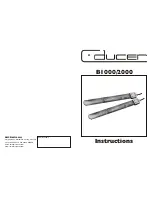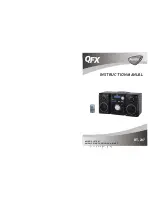
1
PRODUCT GUIDE
377 SERIES MICROPHONES
426 SERIES PREAMPLIFIERS
Contents:
Introduction ................................................................................ 1
Standards .................................................................................... 1
Setting up a Microphone Measurement System ........................ 1
Taking Measurements ................................................................ 2
Accessories ................................................................................. 3
Maintenance ............................................................................... 4
Calibration .................................................................................. 4
Warranty and Service ................................................................. 5
1.0
Introduction
Thank you for your purchase of a PCB high quality microphone. These microphones offer highly accurate
and reliable acoustic measurements and are typically used in research and design applications. They are
accurate enough for laboratory usage, yet rugged enough for field-testing.
Sound within the typical 20 to 20,000 Hz audible range of a healthy human ear can either be pleasing to
the ear, as in music, or unpleasant (or harmful), as in noise. As a result, many applications, from the de-
velopment of consumer products to research in acoustics, measure sound, even sound outside the range of
human hearing. The instrument typically used to measure sound is the microphone, which is designed,
like the human ear, to transform pressure oscillations into a corresponding voltage oscillation.
2.0
Standards
Before selecting an acoustical instrument, it is important to identify which acoustical standards are appro-
priate for the application in which the instrument will be used. Whether for legal purposes or for quality
assurance programs, these standards will help determine the required quality, accuracy and consistency of
the instrument. Standards that correspond to the performance requirements, dimensions and characteris-
tics of acoustical components are established for microphones, sound level meters, calibrators, or other
related components. The most common organizations producing these standards are the American Na-
tional Standards Institute (ANSI) and the International Electrotechnical Commission (IEC). IEC 1094-4
establishes specifications for the mechanical dimensions and certain electroacoustic characteristics for
standard industrial microphones. The performance specification sheet supplied with each PCB micro-
phone identifies the standards to which the microphone is compliant.
3.0
Setting up a Microphone Measurement System
After the proper microphone has been selected, the corresponding preamplifier, cabling, power supplies,
signal conditioning and data acquisition selections are ready to be installed. Not all of these components
are required for all test set-ups. The figures below show typical set-ups for externally polarized and pre-
polarized microphone systems.
A prepolarized microphone can be used with a standard Microphone Power Supply designed for external-
ly polarized microphones, and its preamplifier, provided the supply voltage is set to zero.






























